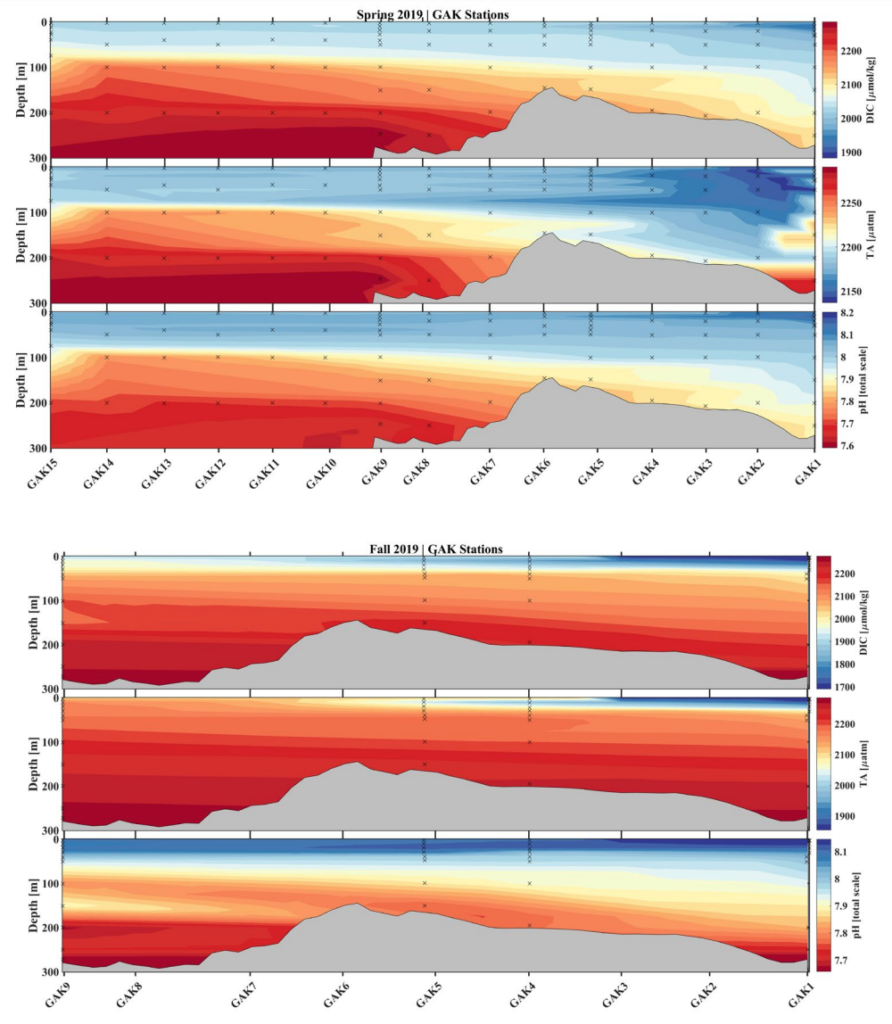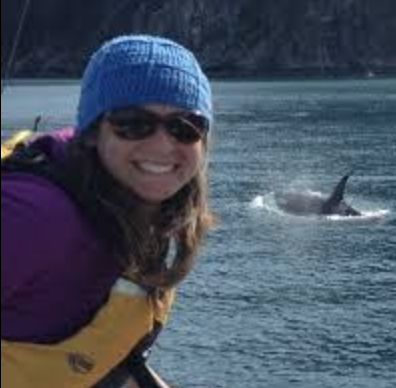Why are we sampling?
Ocean acidification and warming are putting an additional strain on a marine ecosystem that is slowly recovering from the 1989 Exxon Valdez Oil Spill. The high latitude Gulf of Alaska ecosystem is especially vulnerable to ocean acidification and requires high-resolution in-situ observations to characterize the natural inorganic carbon variability and monitor the progression of ocean acidification and climate change. High-resolution ocean acidification monitoring was conducted along the historic Seward Line between 2008 and 2017. Unfortunately, this effort was reduced to just 4-5 stations per cruise in 2018, terminating a time series that was starting to help us understand natural variability and local drivers and define ocean acidification hotspots and potential impacts on the ecosystem. In addition to extending the temporal and geographic coverage of a critical data set, the sampling plan includes the new Kodiak Line, which passes by highly productive areas near current and planned future mariculture grounds suggested to be an ocean acidification hotspot. Understanding the current chemical conditions and progression of ocean acidification is of high socio-economic importance to the region. Overall, the proposed project will help to distinguish the effects of the oil spill from the effects of ocean acidification on the ecosystem and manage sensitive or injured species and resources.
Where are we sampling?
High-resolution ocean acidification monitoring will be reinstituted along the Seward Line and in Prince William Sound in May, July, and September, and expand monitoring along an additional transect off Kodiak.
How are we sampling?
We will tag along the National Science Foundation funded Northern Gulf of Alaska Long-Term Ecosystem Monitoring cruises and collect water samples at stations within the Exxon Valdez oil spill area. We have revised the open-ocean sampling techniques to guarantee high-quality data from this glaciated and estuarine environment. To avoid compromising our inorganic carbon seawater samples we will filter the dissolved inorganic carbon (DIC), pH, and total alkalinity (TA) samples straight from the Niskin bottles into pre-cleaned 500 mL borosilicate bottles and add mercuric chloride (HgCl2) to the sample. DIC and pH will be analyzed simultaneously to avoid influence of air-sea gas exchange.
What are we finding?
This monitoring effort aims to better identify ocean acidification hot spots in space and time through increased sampling frequency while constraining the natural variability of the inorganic carbon chemistry. We plan to estimate the ocean acidification rate and monitor the impacts of the progression of ocean acidification and climate change on the ecosystem to provide important data to stakeholders.





